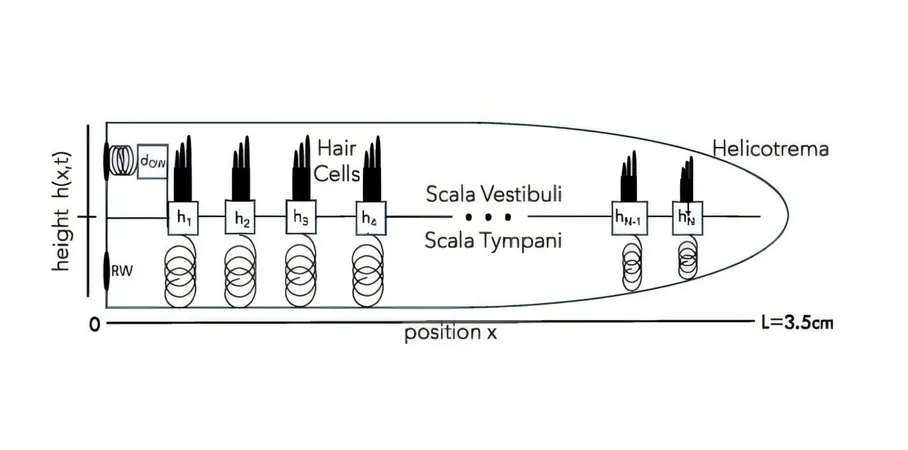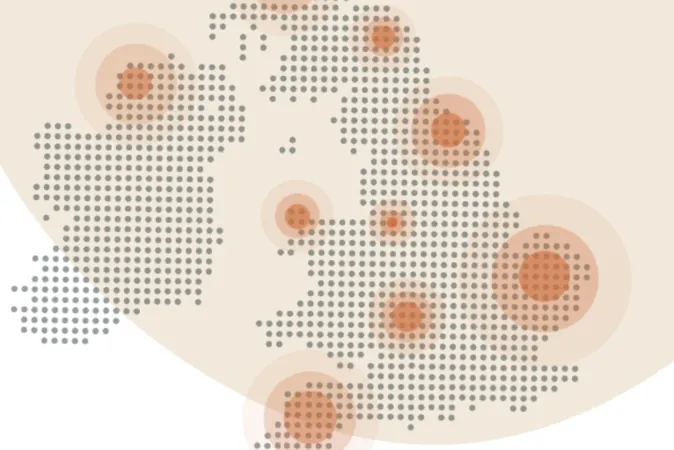
Groundbreaking Discovery Reveals Hidden Mechanisms of Human Hearing—What It Means for Sound Sensitivity!
2025-01-27
Author: Rajesh
Yale Physicists Uncover New Mechanisms of Hearing
Yale physicists have unveiled a remarkable and previously undiscovered aspect of how the human ear functions, uncovering a sophisticated set of "modes" that dictate how our ears amplify faint sounds, withstand disruptive noise, and differentiate an incredible array of sound frequencies. This discovery could revolutionize our understanding of auditory perception and has important implications for hearing technologies.
Cochlear Complexities Revealed
The research team identified these new cochlear complexities by applying established mathematical models to a simulated version of the cochlea—a spiral-shaped organ located in the inner ear crucial for hearing. Their findings, published in the journal PRX Life, provide fresh insights into the ear's impressive capacity for sound detection. The work sheds light on how the mechanical intricacies of the cochlea enhance our ability to hear even the faintest sounds without compromising stability, even when no external sounds are present.
New Insights into Sound Detection
Benjamin Machta, assistant professor of physics and co-senior author of the study, notes, "In our quest to understand the ear's capability to detect subtle sounds, we stumbled upon an entirely new set of low-frequency mechanical modes that the cochlea supports."
Transformation of Sound Waves
Human ears convert sound waves into electrical signals, allowing us to perceive frequencies over a staggering range of more than a trillion-fold in power. Within the cochlea, these sound waves transform into surface waves traveling along the hair-lined basilar membrane. Each frequency resonates at specific points along this structure, where hair cells respond to the vibrations by transmitting signals to the brain, telling us what we are hearing.
Role of Hair Cells
The hair cells also perform an essential role as mechanical amplifiers, injecting energy into sound waves to combat friction and ensure the signals reach their intended location effectively. Precisely modulating this energy input is vital for accurate sound perception.
Implications of New Cochlear Modes
However, the revelation of a second, more complex arrangement of cochlear modes presents a fresh perspective on auditory processing. In these newly identified extended modes, larger sections of the basilar membrane move in unison in response to a single tone, resulting in constraints that affect how hair cells respond to sounds and how they manage energy distribution.
Future Research Directions
The implications of this discovery could extend to understanding low-frequency hearing, which remains an active area of research, according to Isabella Graf, a former Yale postdoctoral researcher now at the European Molecular Biology Laboratory in Heidelberg, Germany.
Collaborative Efforts
In addition to the significant contributions from Machta and Graf, collaborating researchers Michael Abbott from Yale and Julian Rubinfien from Harvard played crucial roles in this transformative study. The team is part of Yale's Quantitative Biology Institute, which focuses on using mathematical models to decode complex biological systems.
Enhancements in Hearing Technology
This breakthrough not only enriches our understanding of auditory mechanisms but also opens up new avenues for enhancing hearing aids and other auditory devices. Could this be the key to better sound quality for millions of people? Stay tuned for more updates as research continues!





 Brasil (PT)
Brasil (PT)
 Canada (EN)
Canada (EN)
 Chile (ES)
Chile (ES)
 Česko (CS)
Česko (CS)
 대한민국 (KO)
대한민국 (KO)
 España (ES)
España (ES)
 France (FR)
France (FR)
 Hong Kong (EN)
Hong Kong (EN)
 Italia (IT)
Italia (IT)
 日本 (JA)
日本 (JA)
 Magyarország (HU)
Magyarország (HU)
 Norge (NO)
Norge (NO)
 Polska (PL)
Polska (PL)
 Schweiz (DE)
Schweiz (DE)
 Singapore (EN)
Singapore (EN)
 Sverige (SV)
Sverige (SV)
 Suomi (FI)
Suomi (FI)
 Türkiye (TR)
Türkiye (TR)